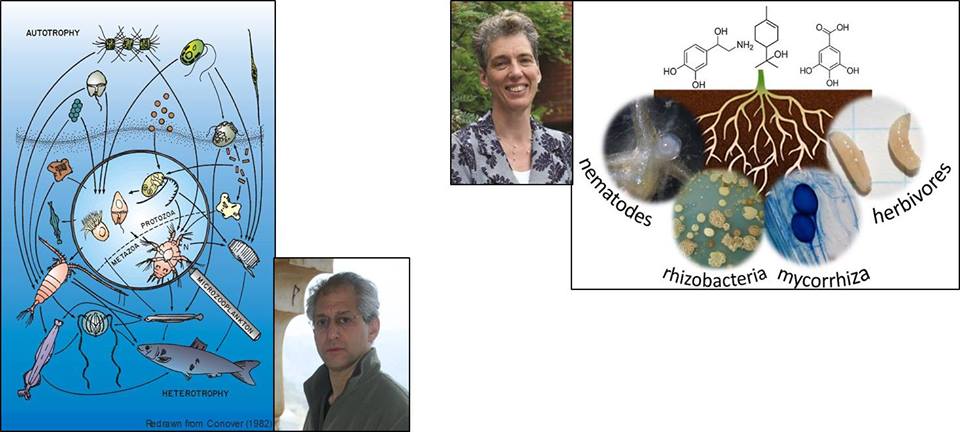3.6.: Fachbereich-Seminar
„Does that smell strange! Herbivore-induced plant volatiles accurately reflect evolutionary history, diet breadth, and feeding mode of herbivores“ (Nicole van Dam, Molecular Interaction Ecology, German Centre for Integrative Biodiversity Research (iDiv), Halle-Jena-Leipzig, Germany )
From the early days of herbivore induced plant volatile (HIPV) studies, it has been postulated that induced volatiles may serve as reliable cues to natural enemies searching for a host. It has been shown that plants can recognize the herbivore that is feeding based on feeding patterns or herbivore specific cues. When exotic herbivores colonize native host plants in their novel range, plants may not be able to recognize these herbivores due to a lack of co-evolutionary history. This may effectively disrupt the communication between plants and higher trophic levels. Based on the analyses of HIPV profiles induced by 10 different herbivores on Brassica rapa native to the Netherlands, we found that HIPV blends accurately predict feeding mode, level of specialization as well as whether the herbivore is an exotic or native herbivore. In addition, we used Partial Least Squares models to predict the status of two additional herbivores, Spodoptera exigua and Trichoplusia ni, based on the HIPV profiles released after they fed on the plant. Our models were able to predict with high reliability (>90%) that these two herbivores are exotic leaf chewing generalists with respect to the Dutch B. rapa plants. This indicates that feeding by exotic herbivores results in the emission of specific HIPV blends, based on which higher trophic levels could reliably assess whether the plant harbors a suitable host.
„Can protists control cyanobacterial blooms?“ (David J.S. Montagnes, nstitute of Integrative Biology, University of Liverpool, Liverpool, UK)
Rising temperature increases vital rates, influencing microbial population and ecosystem dynamics; e.g., the predicted increases in cyanobacterial blooms associated with global warming. However, heterotrophic and mixotrophic protists, which are dominant grazers of microalgae, may be more thermally sensitive than autotrophs, and thus prey could be suppressed as temperature rises. Theoretical work has begun to address this issue, but an appropriate framework linking data with theory is lacking. Using ecophysiological data to develop a novel model structure, I offer a validation of this thermal sensitivity hypothesis: increased temperature improves the consumer’s ability to control the autotrophic prey. Specifically, the model accounts for temperature effects on auto- and mixotrophs and ingestion, growth, and mortality rates, using an ecologically and economically important system (cyanobacteria grazed by a mixotrophic flagellate). Once established, I show the model to be a good predictor of temperature impacts on consumer–prey dynamics by comparing simulations with microcosm observations. Then, through simulations, I indicate the conclusions remain valid, even with large changes in bottom-up factors (prey growth and carrying capacity).
Beide Vorträge finden Mikroskopieraum der Botanik (D-1.039) statt.
Dr. Stephen Wickham, Prof. Stefan Dötterl und Univ.-Prof. Dr. Ulrike-G. Berninger (FB-Leiterin) Gäste sind wie immer herzlich willkommen!





